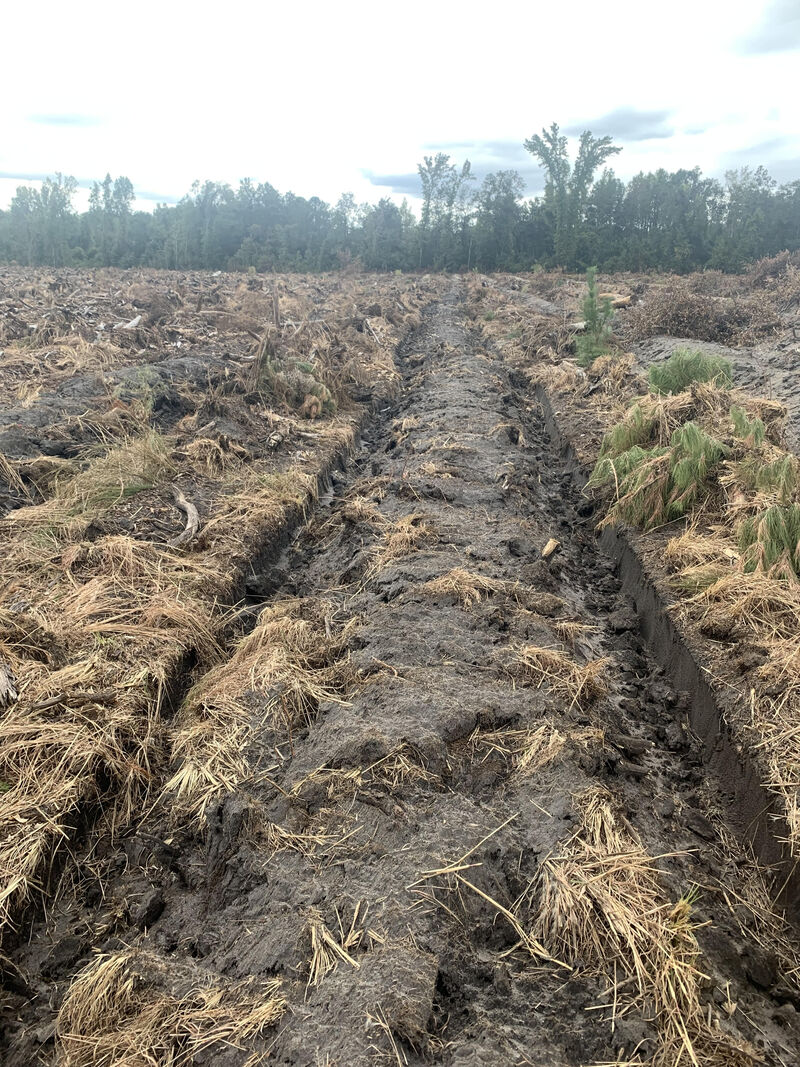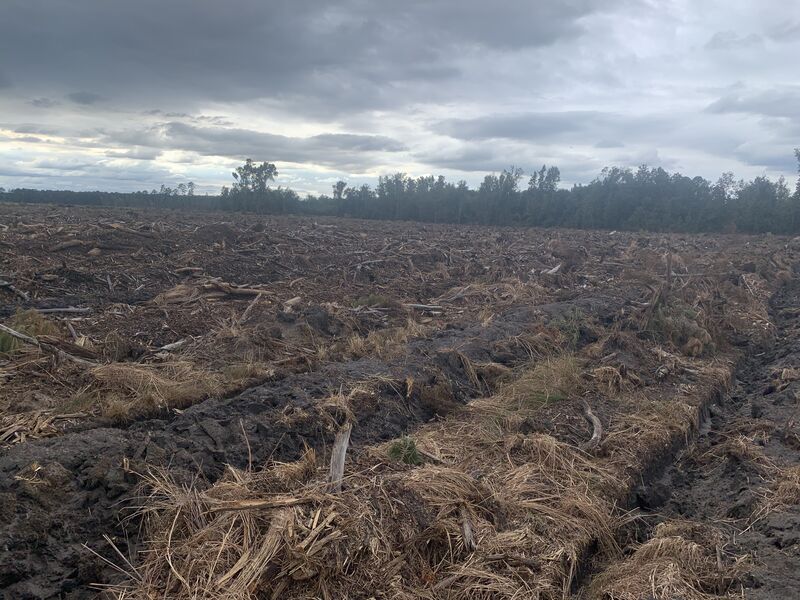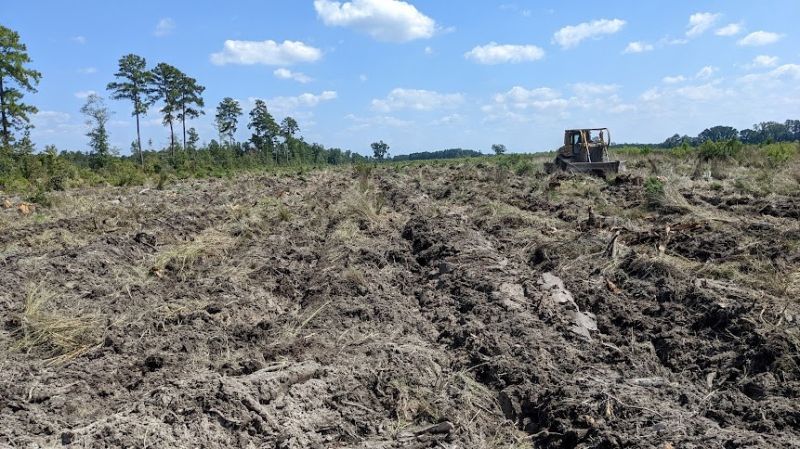
A good bed is an important component of a successful establishment program on poorly to very poorly drained sites.
Excessive water is a problem for pine growers in the Southeast US. It causes a lack of soil aeration and greatly limits root growth and subsequent nutrient uptake. Delayed root growth equals delayed shoot growth, often contributing to a 'wet-site' growth curve (decreased achieved site index). Alternatively, adequate water with strong soil aeration in a good climate empowers growth potential in the operational 9-12+ green ton/acre/year range for much of the SEUS. Ditching is a good remediation treatment, but the potential for ditching is limited except in the cases of the cleaning out of existing ditches created prior to the 1980's. Bedding is the primary way of increasing rooting soil volume on many sites. But just 'bedding' a site is not enough, i.e. you can pay for a bed and still not have a fix; you need a good bed.

What does a good bed look like? Optimally, it is free of debris, high and wide, fully pulled together, and settled. Debris management ahead of the bedding pass can be very important. The tract pictured was sheared with a 12' V-blade and then a 2nd pass and machine was used to pull the beds on 14' centers. This work was completed on client lands in Robeson County, NC over the last two weeks. Alternatively, a single pass, or 'dirty bed' can be beneficial in some cases (every pass costs money) but often times stumps, logging debris, organic root mats, or ericaceous brush need to be removed to facilitate good planting quality and necessary seedling root and mineral soil contact.

Is this a good bed? Absolutely -- strong height, well formed, good debris management. Is it ready to plant? Absolutely not. It will require some time (and inches of rain) to settle and some breakdown of some incorporated debris. This tract will be planted in the conventional season with a high breeding value (for volume) bare-root seedling in the conventional season. Lots of potential here.

